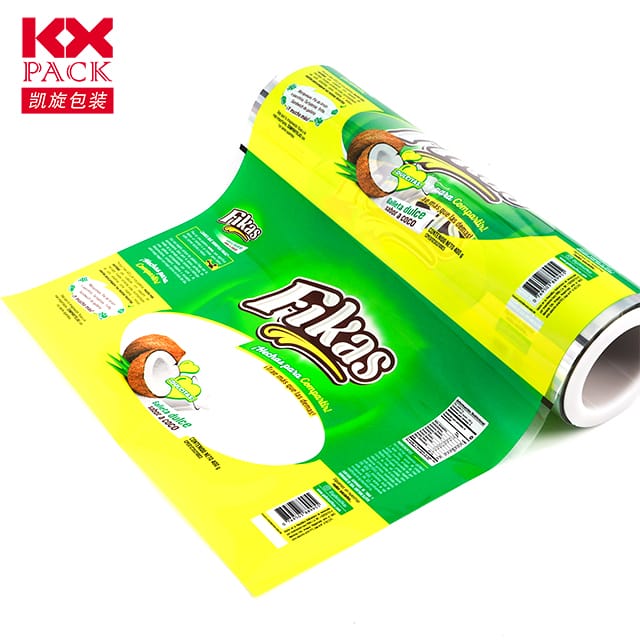การเพิ่มขึ้นของบรรจุภัณฑ์ภาพยนตร์ที่ยืดหยุ่น: นวัตกรรม, ความยั่งยืน, และการเปลี่ยนแปลงอุตสาหกรรม
บรรจุภัณฑ์ฟิล์มที่ยืดหยุ่น
In the dynamic world of packaging, flexible films packaging ได้กลายเป็นผู้เปลี่ยนเกม, การปรับเปลี่ยนอุตสาหกรรมจากอาหารและยาไปจนถึงการดูแลและโลจิสติกส์ส่วนบุคคล. กำหนดโดยน้ำหนักเบา, ปรับได้, และวัสดุประสิทธิภาพสูง, flexible packaging now accounts for a significant share of the global market—estimated at$270.96 พันล้านใน 2023 and projected to grow at aCAGR ของ 4.8% ผ่าน 2030. This surge is driven by its ability to meet evolving consumer demands, แรงกดดันด้านกฎระเบียบ, และเป้าหมายการพัฒนาอย่างยั่งยืน. Let’s explore why flexible films are becoming the packaging solution of choice.
1. Key Properties: Why Flexible Films Stand Out
บรรจุภัณฑ์ฟิล์มที่ยืดหยุ่น are engineered to balance functionality and efficiency. Their defining features include:
- Lightweight and Portable: Unlike rigid packaging (เช่น, glass or metal), flexible films reduce material use and transportation costs. A single truckload of flexible films can carry the equivalent of 10 truckloads of glass jars, slashing carbon emissions.
- Barrier Protection: Advanced multilayer structures—combining polymers like polyethylene (วิชาพลศึกษา), โพรพิลีน (การตีป๊อป), or polyvinyl chloride (พีวีซี) with aluminum foil—create impermeable barriers against oxygen, ความชื้น, และแสงสว่าง. This extends shelf life for perishables like meat and cheese by up to 50% compared to traditional packaging.
- ความต้านทานอุณหภูมิ: Flexible films withstand extreme conditions, from oven-safe pouches for ready-to-eat meals to freezer-grade films for frozen foods.
- การปรับแต่ง: Films can be tailored to product shapes, minimizing waste and maximizing product-to-package ratios. This precision is critical for single-serve snacks, pet treats, and pharmaceutical blisters.
2. แอปพลิเคชันอุตสาหกรรม: From Food to Pharmaceuticals
บรรจุภัณฑ์ฟิล์มที่ยืดหยุ่น have disrupted multiple sectors by offering cost-effective, high-performance solutions:
- อาหาร & เครื่องดื่ม: The largest market segment, flexible films dominate snack packaging, fresh produce wraps, and microwaveable meals. ตัวอย่างเช่น, stand-up pouches with resealable zippers reduce food waste by keeping contents fresher longer.
- อาหารสัตว์เลี้ยง: Innovations like lightweight treat packs and bulk sacks with odor-barrier layers cater to pet owners’ demands for convenience and freshness.
- Healthcare & Pharmacy: Sterile, tamper-evident blister packs and peelable pouches ensure drug safety and compliance with strict regulatory standards.
- Logistics & อีคอมเมิร์ซ: ทนทาน, puncture-resistant films protect goods during shipping, while shrink-wrap films secure pallets for efficient transportation.
3. ความยั่งยืน: The Driving Force Behind Adoption
As environmental concerns mount, flexible films are evolving to meet circular economy goals:
- Reduced Carbon Footprint: Manufacturing บรรจุภัณฑ์ฟิล์มที่ยืดหยุ่น requires 60% less energy than rigid alternatives like glass. Their lightweight nature also cuts fuel consumption during shipping.
- ตัวเลือกการรีไซเคิลและย่อยสลายได้: Innovations like mono-material PE films and plant-based compostable films (เช่น, NATIVIA® by Taghleef Industries) กำลังได้รับแรงฉุด. Some brands now use 100% เนื้อหารีไซเคิล in their films.
- Waste Reduction: บรรจุภัณฑ์ฟิล์มที่ยืดหยุ่น generate 80% less landfill waste than rigid packaging due to their efficient material use.
อย่างไรก็ตาม, ความท้าทายยังคงอยู่. Multi-layer films, while high-performing, are often non-recyclable. Industry leaders are investing inการรีไซเคิลเคมี และadvanced sorting technologies to address this gap.
4. Future Trends: What’s Next for Flexible Films?
The market is poised for transformative growth, ขับเคลื่อนโดย:
- บรรจุภัณฑ์อัจฉริยะ: Integration of IoT sensors to monitor freshness or QR codes for supply chain transparency.
- Advanced Adhesives and Substrates: New laminations improve barrier properties without adding thickness, เปิดใช้งานทินเนอร์, stronger films.
- การปฏิบัติตามกฎระเบียบ: Stricter eco-laws (เช่น, คำสั่งพลาสติกแบบใช้ครั้งเดียวของสหภาพยุโรป) are pushing brands to adopt sustainable films.
- Consumer Convenience: ปิดผนึกได้, easy-open, and single-dose designs cater to on-the-go lifestyles.
บทสรุป: Flexible Films as the Future of Packaging
Flexible films packaging is no longer just an alternative—it’s a necessity for brands aiming to stay competitive in a fast-paced, eco-conscious market. By combining innovation, ความยั่งยืน, และความเก่งกาจ, these materials are redefining how products are protected, ที่นำเสนอ, and preserved. เมื่อเทคโนโลยีก้าวหน้าไป, expect flexible films to become even smarter, greener, and more integral to global supply chains.
Ready to embrace the future of packaging? Whether you’re a brand owner, manufacturer, หรือผู้บริโภค, the shift to flexible films is a win for efficiency, ความยั่งยืน, and the bottom line.
แหล่งกำเนิด: Flexible Packaging Association, AMI Plastics, Taghleef Industries, Market Research Reports (2023–2030)






